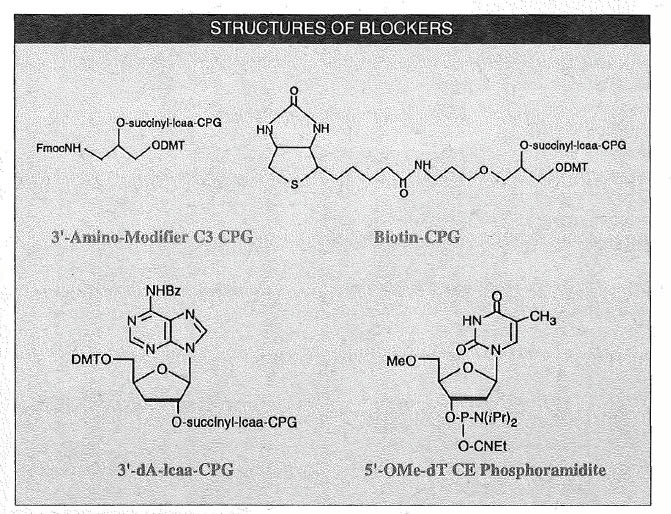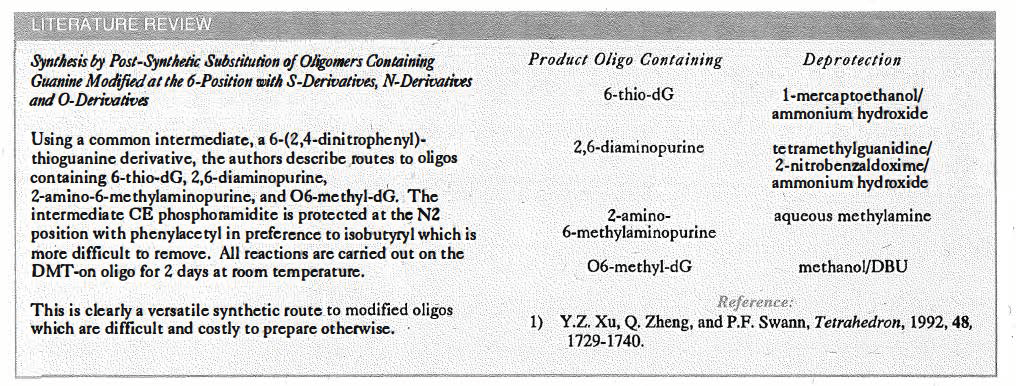Glen Report 5-14: Blocking the Termini of Oligonucleotides
Exonuclease activity, predominantly at the 3'-terminus of oligonucleotides is the primary source of degradation of oligonucleotides designed as therapeutic agents. It is possible to enhance the stability of oligonucleotides to 3' exonuclease by modification of the 3'-terminus. Although 3'-Amino-Modifier C3 CPG was designed primarily as a reagent for allowing the introduction of a label at the 3'-termirtus, it has been found to be particularly useful for modifying the 3'-terminus to block exonuclease degradation1 . In a similar manner, biotin-CPG may be used to block the 3'-terminus from exonuclease digestion. However, it is more often used to block the 3'-terminus from extension during · PCR while offering a tag for later capture by steptavidin.
The 3'-terminus may be blocked from polymerase extension by the introduction of a 3'-deoxynucleoside. Cordycepin (3'-deoxyAdenosine) CPG has been used effectively for this purpose.
Blocking of the 5'-terminus from 5' exonuclease activity is of lesser importance in vivo but maybe useful as a research tool to protect defined sequences. 5'-OMe-dT-CE phosphoramidite has been designed to block the 5'-terminus from both digestion and extension.

Reference
J. G. Zendegui, K.M. Vasquez, J.H. Tinsley, D.J. Kessler, and M.E. Hogan, Nucleic Acids Res., 1992, 20, 307-314.
Product Information
3'-Amino-Modifier C3 CPG Biotin-CPG (20-2951) has been discontinued. Please see:
Biotin-CPG (20-2955)
3'-Amino-Modifier C3 CPG (20-2950) has been discontinued. Please see:
3'-PT-Amino-Modifier C3 CPG (20-2954)
3'-deoxyAdenosine (20-2004)
5'-OMe-dT-CE Phosphoramidite (10-1031)

- Glen Report 5-11: 2'-0Me-RNA -The Logical RNA Alternative?
- Glen Report 5-12: Psoralen C2 / Direct Fluorescein Labelling of Oligonucleotides
- Glen Report 5-13: BioTEG - The Ultimate Biotin Phosphoramidite
- Glen Report 5-14: Blocking the Termini of Oligonucleotides
- Glen Report 5-15: Thiol Modification of Oligonucleotides
- Glen Report 5-16: Spacer Phosphoramidite
- Glen Report 5-17: Unusual Monomers

